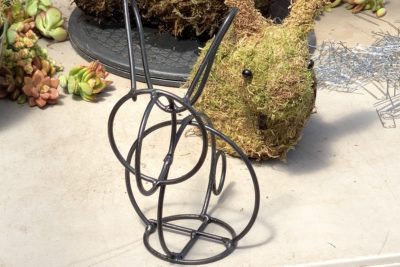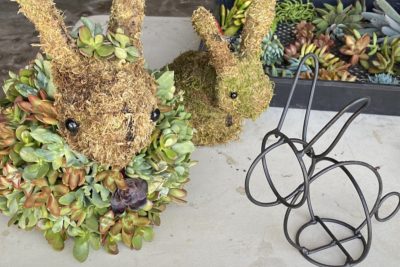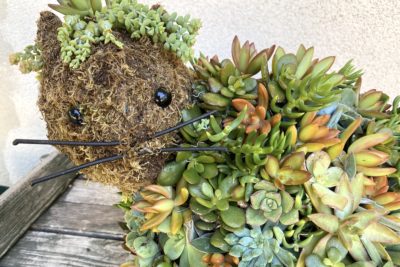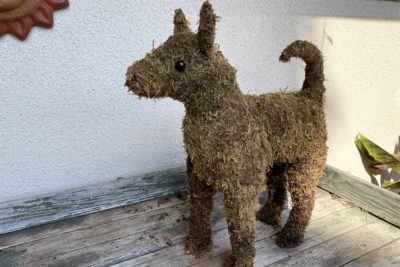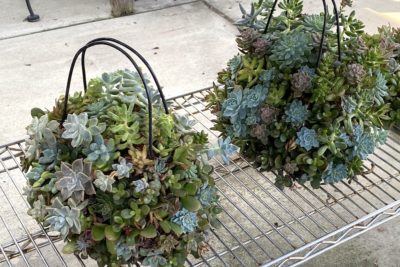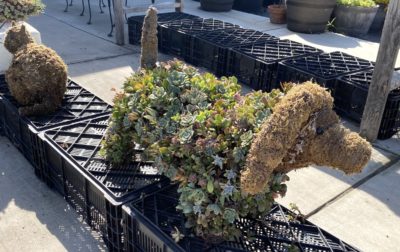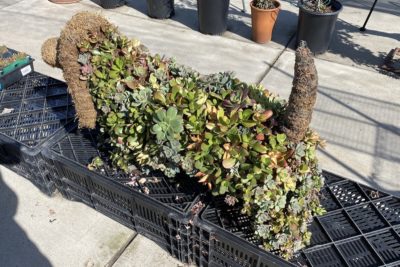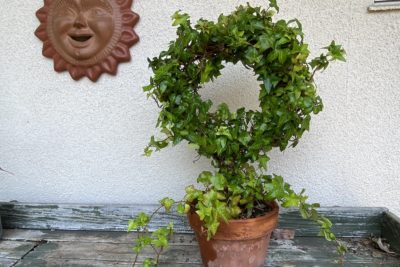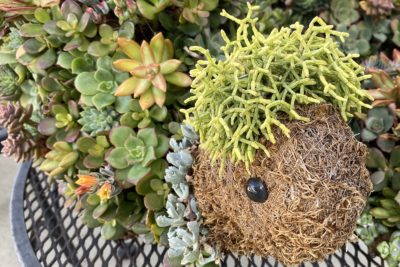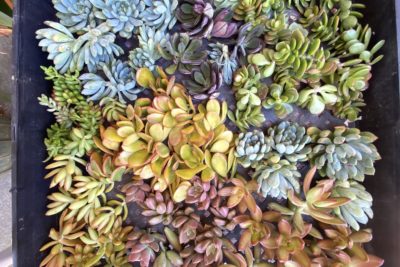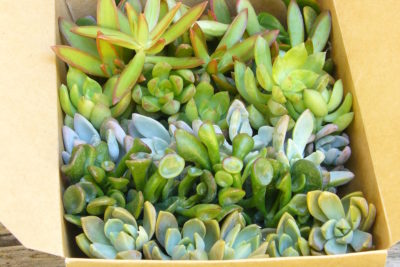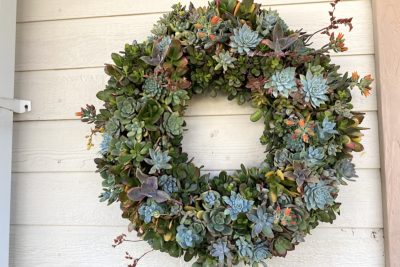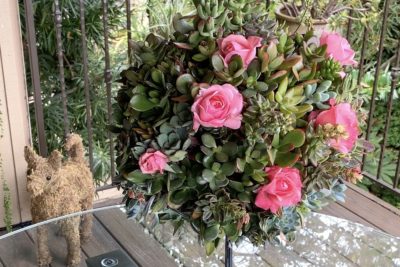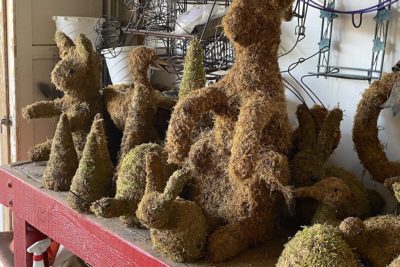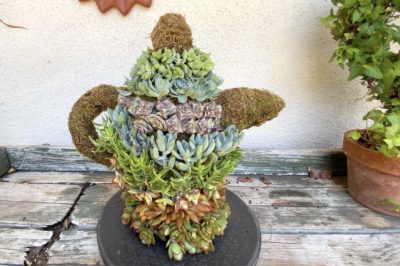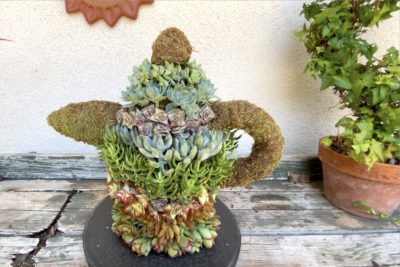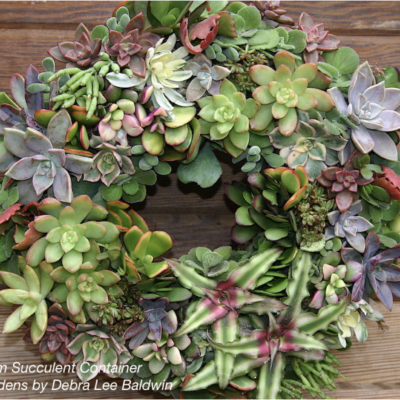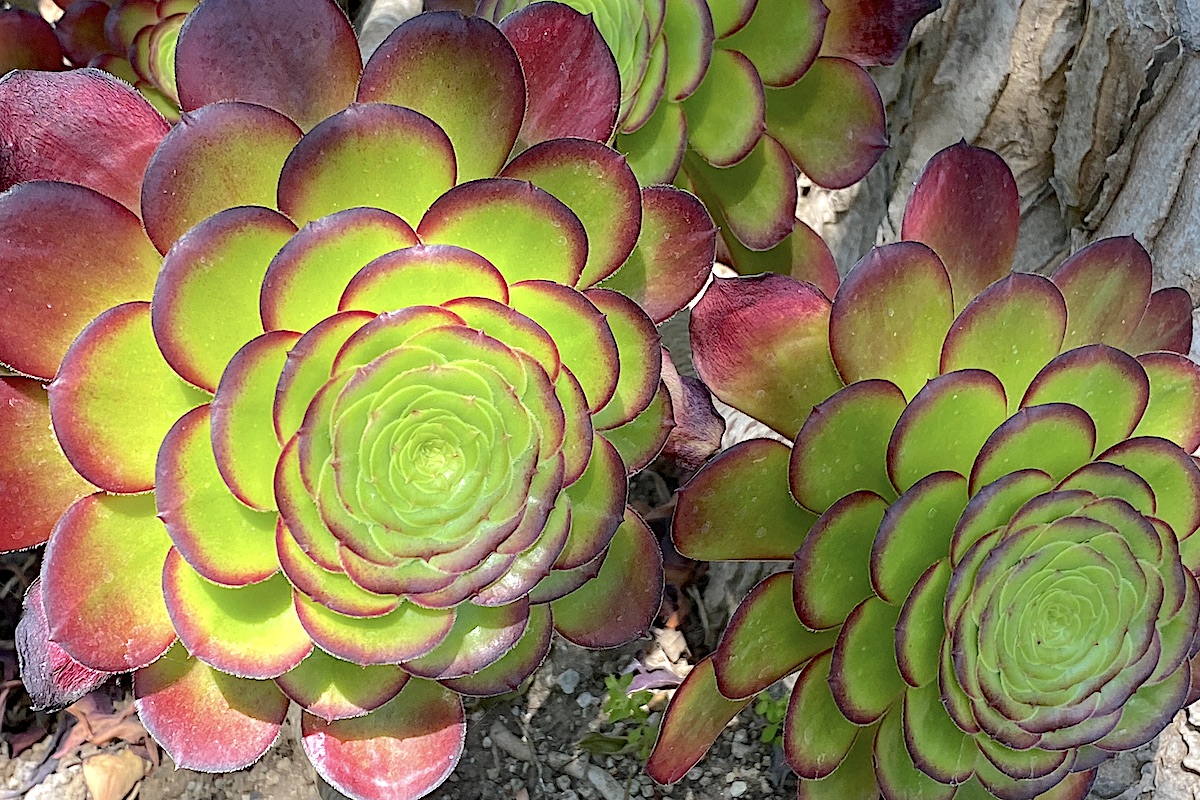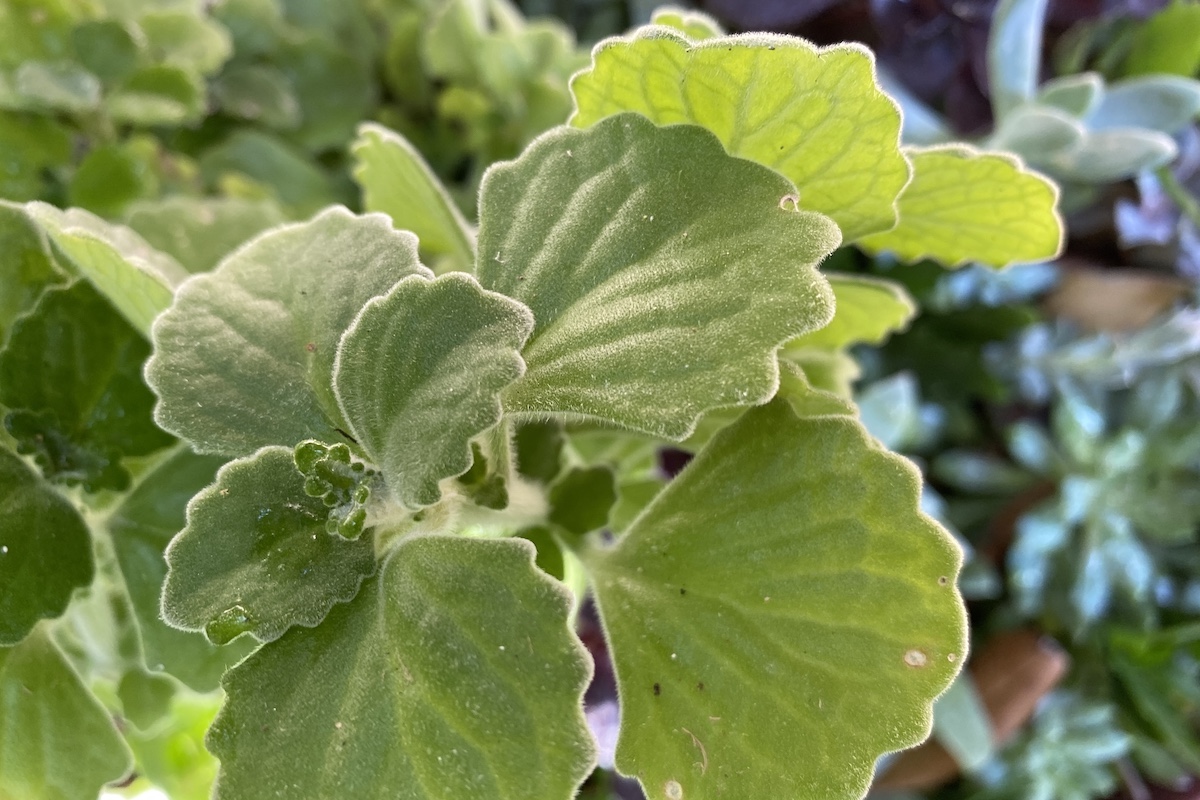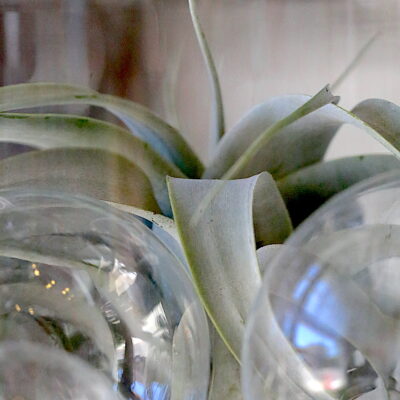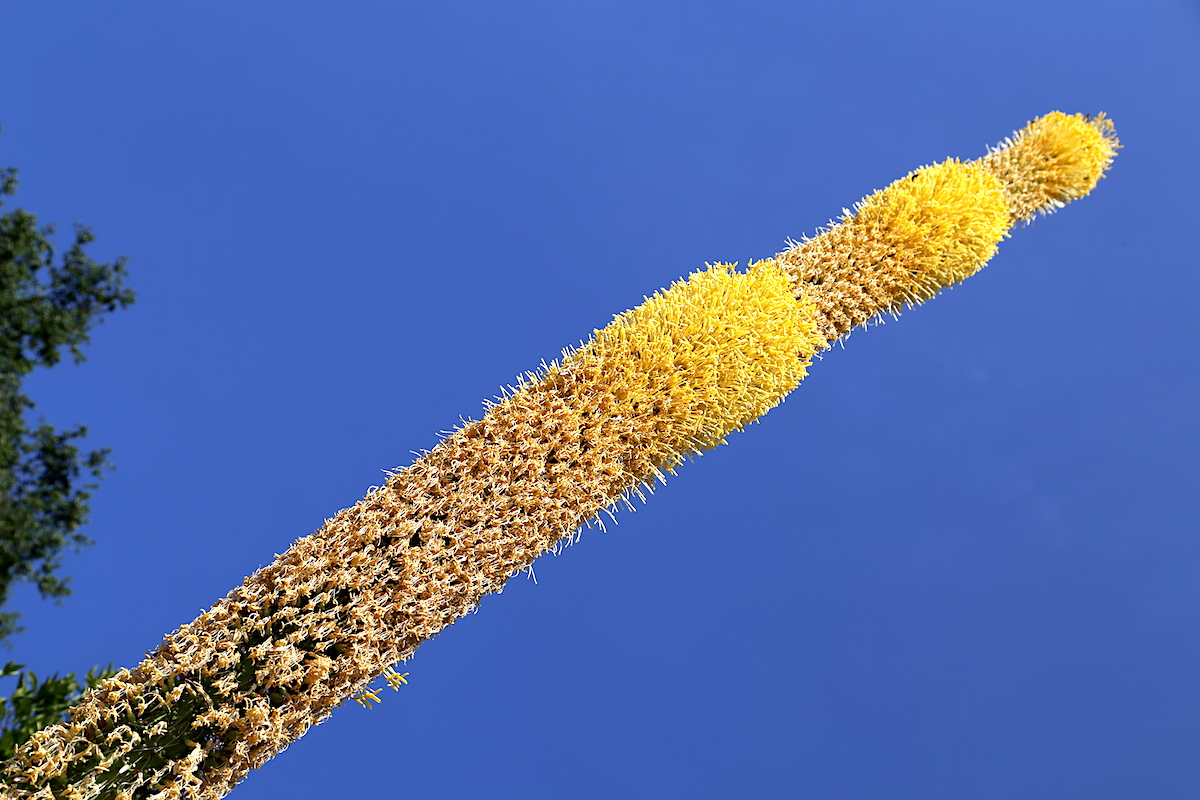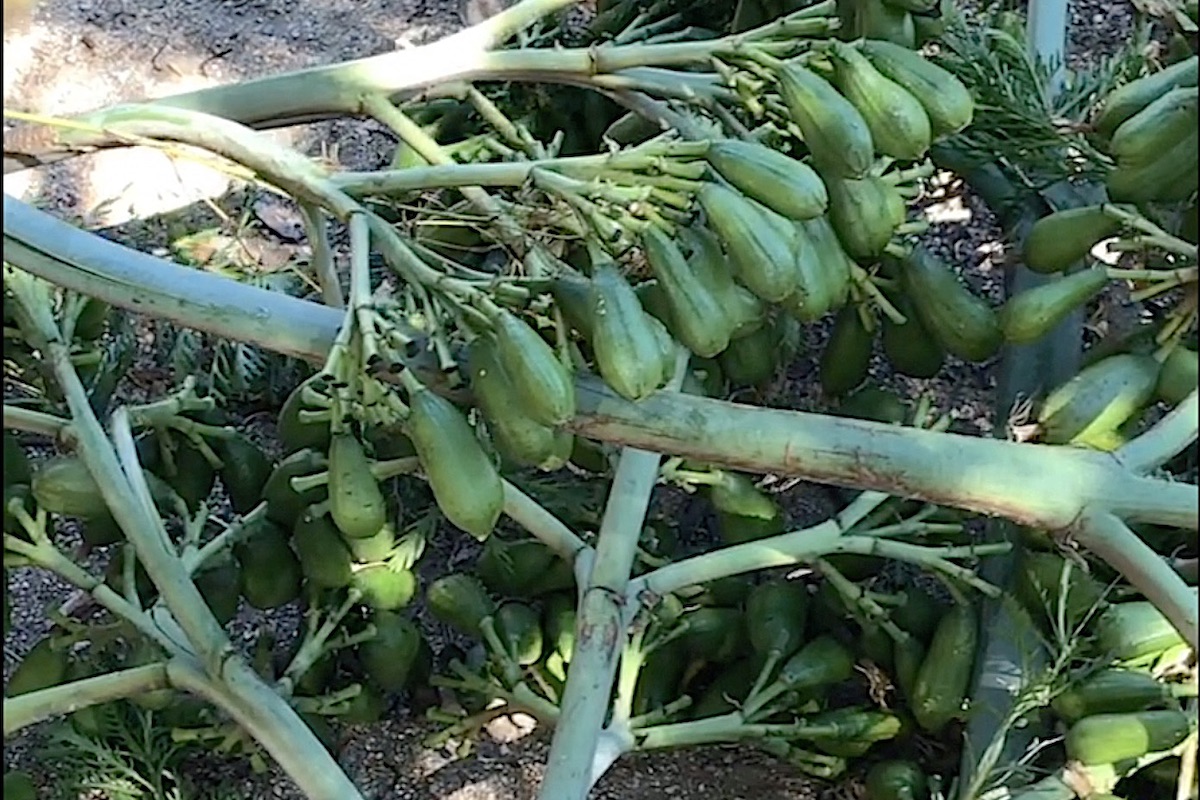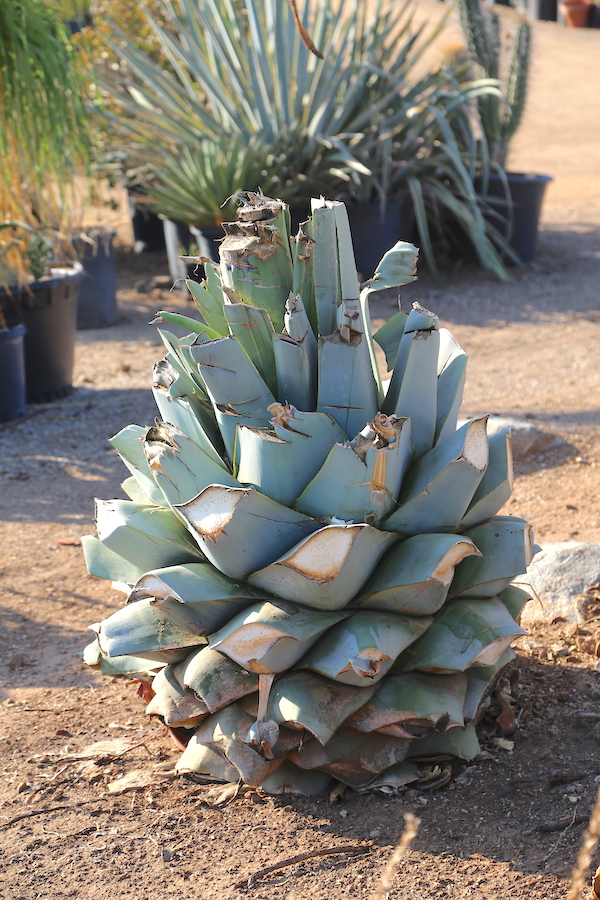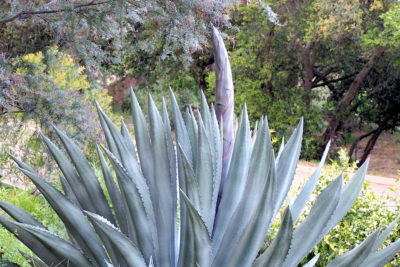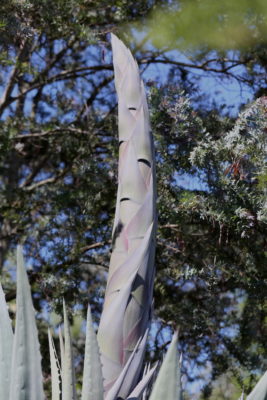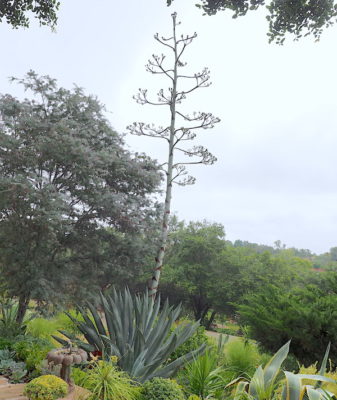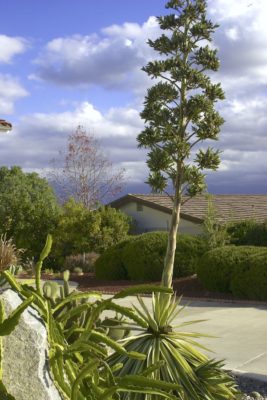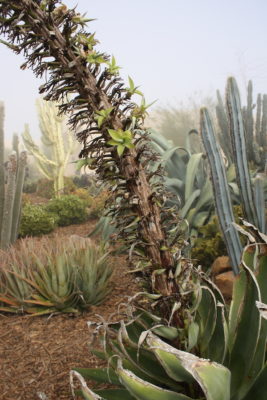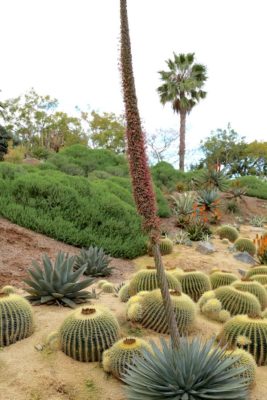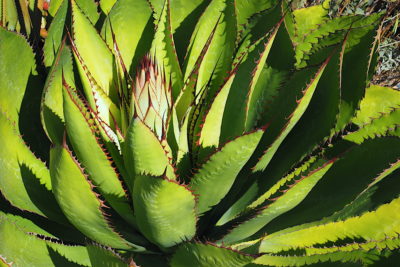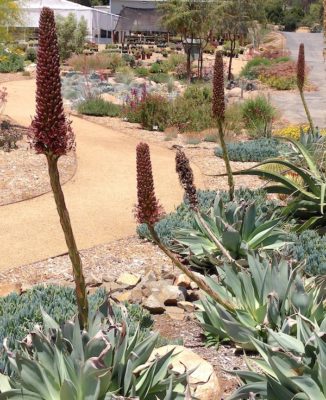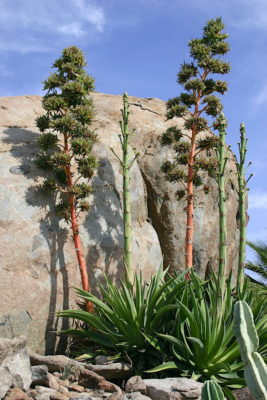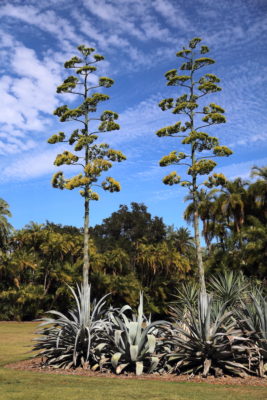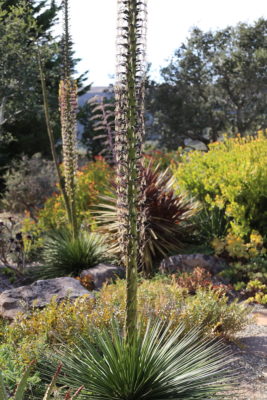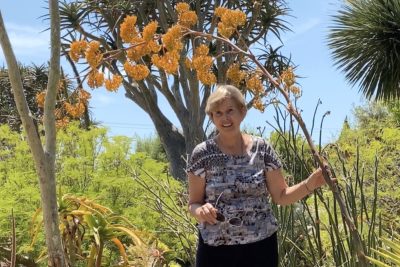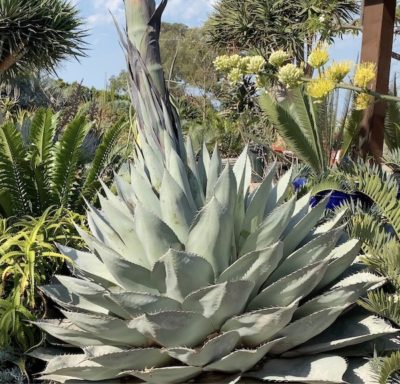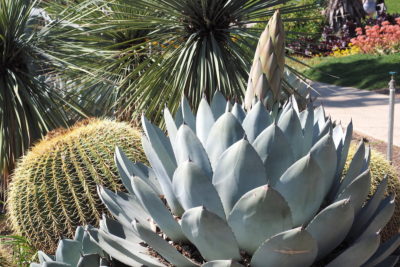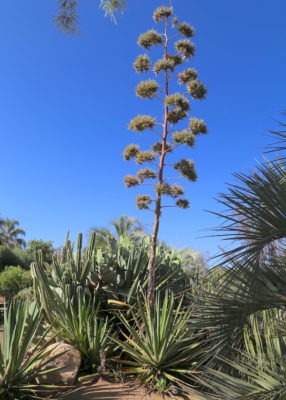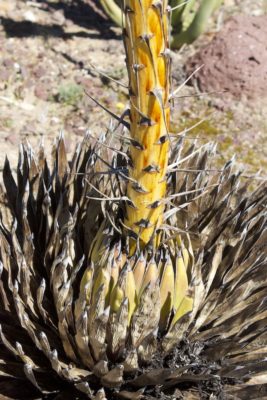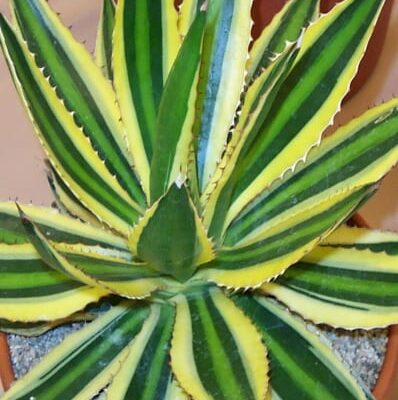In my latest video, topiary pro Pat Hammer shows step-by-step how to plant a succulent topiary. Pat explains design, watering, pruning, and long-term care. You'll discover how easy it is to plant cuttings in a moss-filled form, and how to keep a planted topiary looking good for years.

Above: I'm working on a dog topiary at Samia Rose Topiary. Friend Sandi Dixon joined me. In the video and gallery below, you'll see her first-timer's teapot topiary.
Thanks to Pat, I'm inspired to use succulent topiaries to add whimsy and appeal to my garden and outdoor living areas. I can attest that such Disneyesque plantings delight guests, make wonderful gifts, and are simple, rewarding projects to do with friends, garden clubs and grandkids.
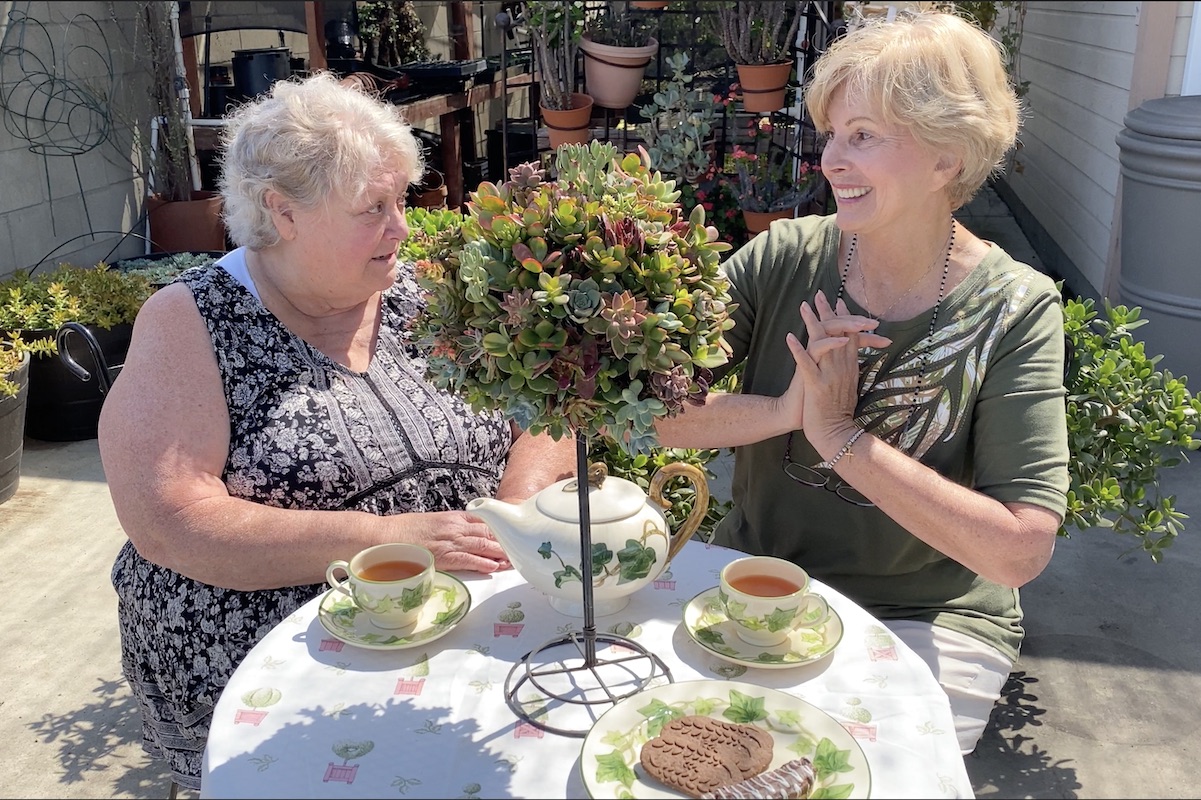
Over tea at Samia Rose, I talk topiary with founder/designer Pat Hammer (from the video)
Meet the Artist
Her Samia Rose Topiary is near San Diego, but owner Pat Hammer began her specialization at famed Longwood Gardens in Pennsylvania. When we met several decades ago, Pat was renowned for large topiaries for destinations such as Universal Studios, the Dallas Arboretum and the San Diego Zoo.

This life-sized horse was among Pat's large projects, early-on
Pat put Samia Rose on hold for 12 years to serve as Director of Operations at the San Diego Botanic Garden. She gave the garden nine life-sized topiary dancers and mariachis that she'd made earlier for the Philadelphia Flower Show. They continue to be the SDBG's most photographed displays.

Ivy topiary mariachis by Pat Hammer (Rachel Cobb photo)
Tabletop Topiaries
Pat now specializes in topiaries perfect for patios, outdoor sitting areas and entryways---any sheltered area where they can be seen up-close and get adequate light. With proper care, such sturdy, metal-frame topiaries last decades.

My dog topiary greets visitors to my home
Create a Topiary
Pat ships topiary kits throughout the US and Canada. Each comes with a moss-filled form, florist's pins, and succulent cuttings (which are optional---you can use cuttings from your garden).
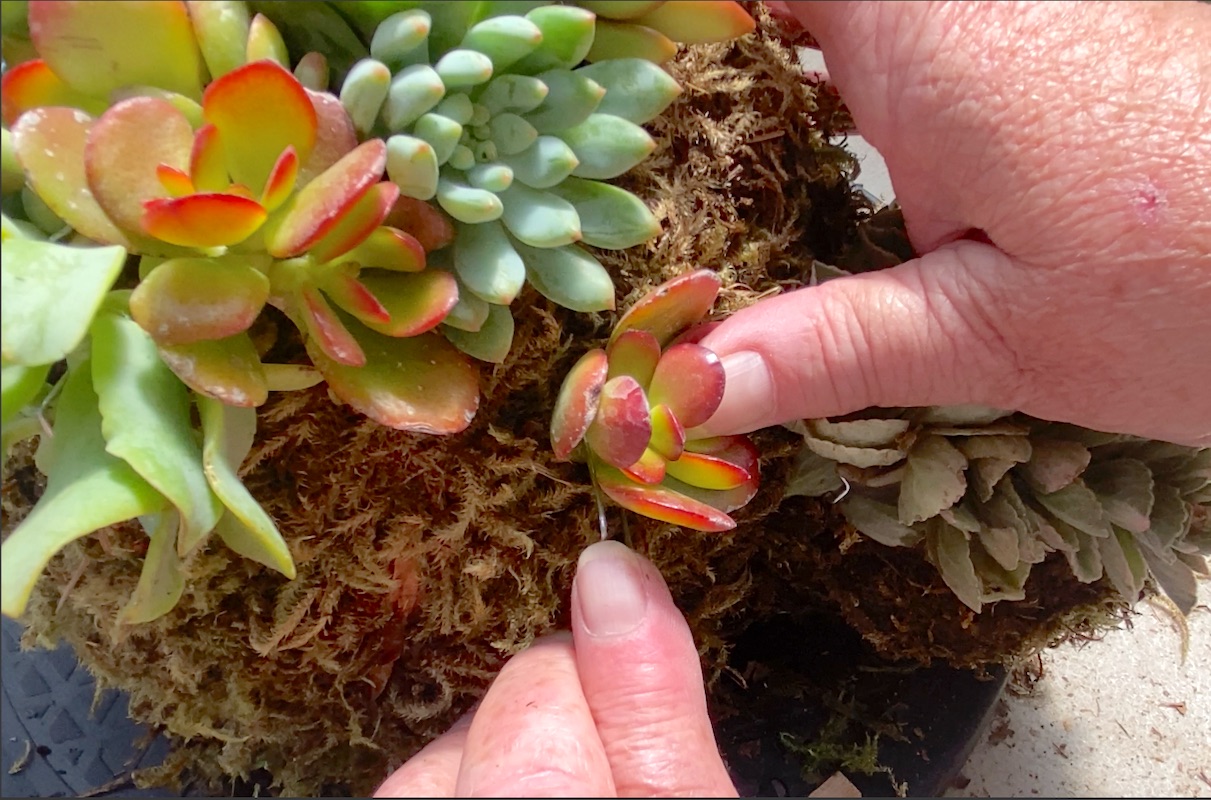
Pat shows how to attach succulent cuttings (from the video)
Plant a topiary, step-by-step:
- Submerge the moss-filled form in water for at least an hour. Let drain. When it no longer drips, it's ready.
- Set up a work area and spread out your cuttings. If you have a lazy Susan, it's handy to rotate the form as you plant it.
- Secure cuttings to the moss with floral pins. Optional: Poke a hole in the moss for a cutting's stem before pinning it.
- Leave ears, tails, faces and lower legs unplanted so it's obvious at a glance what the figure is.
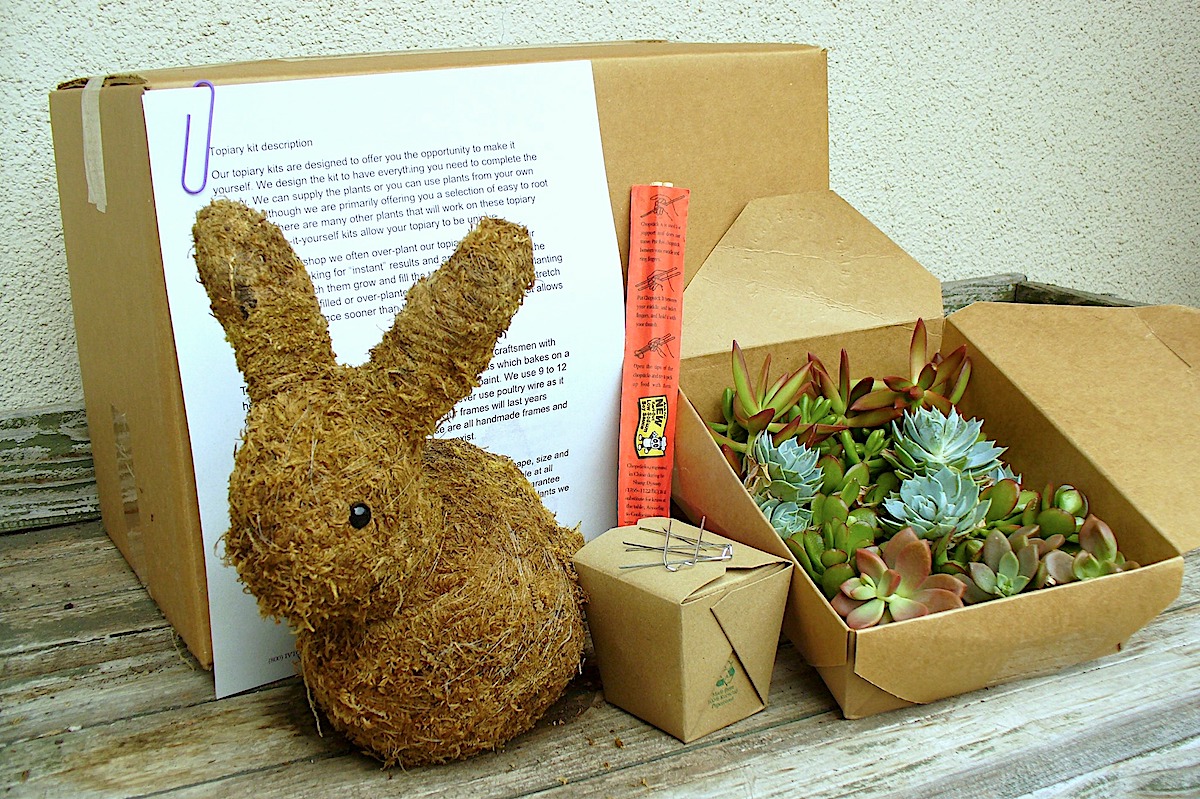
A bunny topiary kit from Samia Rose Topiary complete with floral pins, instructions and cuttings (if ordered).
Topiary Care
Typical of most soft-leaved succulents, those in a topiary thrive in a location that gets several hours of sun (morning or afternoon) and bright shade the rest of the day.
Plants grow in the direction of greatest light, so for balanced growth, turn the topiary 180 degrees weekly.
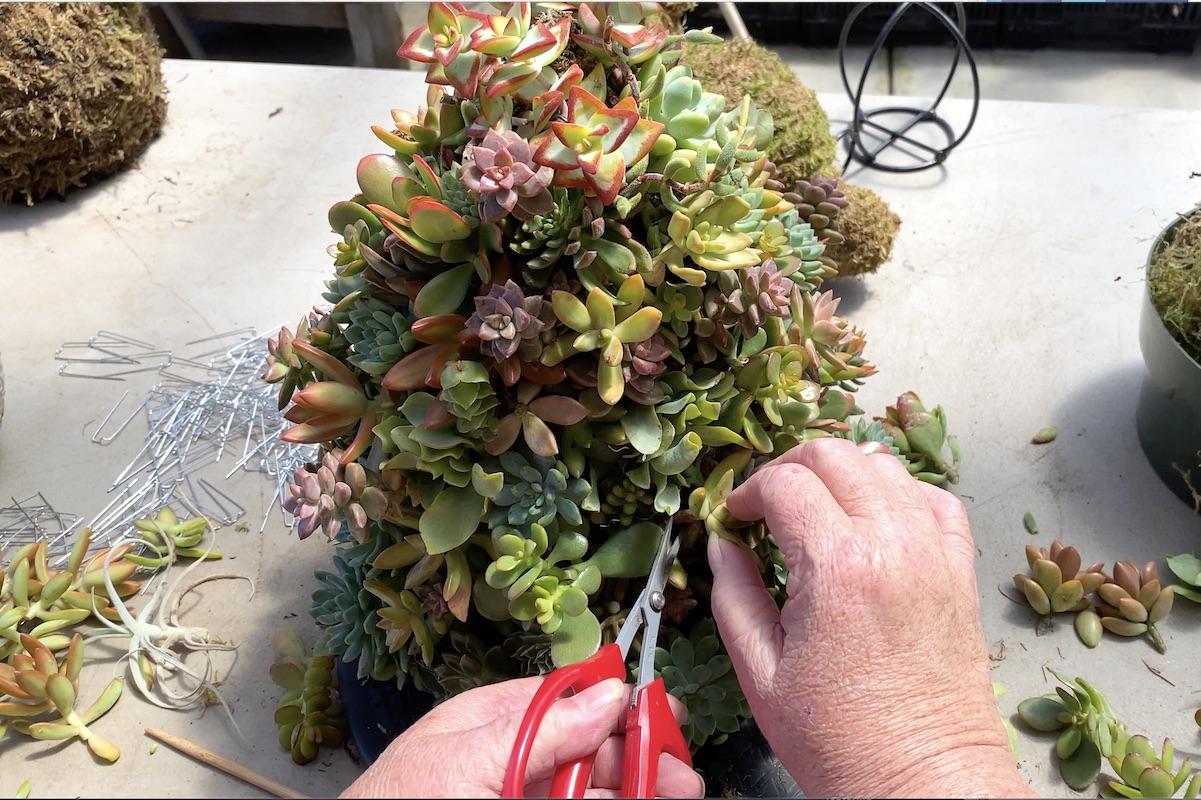
In the video, Pat Hammer demonstrates how to prune and refresh an overgrown topiary
Keep moss moist but not soggy. If a topiary is heavy when you lift it, it's wet enough. If it's lightweight, it likely needs water. If it goes completely dry, soak it to rehydrate it (plants and all). A lot depends on where you live; In humid areas, moss doesn't dry out as quickly.
Most succulents need protection from frost, strong sun and extreme (desert) heat. If you need to seasonally shelter a topiary indoors, give it good air circulation and use grow lights to keep plants from stretching.
Should you add fertilizer when you water? It's not necessary, in fact it can make plants larger. It's best for the look of the topiary if they stay tight and compact.
Worst Case Scenario
No worries! If succulents rot from overwatering or shrivel beyond hope from under-watering, simply pull them out, discard, and start over with fresh. Remove as many of the old pins as possible. Be careful, because they'll have rusted. Btw, rust is a good thing aesthetically because it turns shiny pins brown, so they disappear. "Which makes what you've created seem like magic," Pat says.
Succulent topiaries at Samia Rose
Succulent Christmas Tree Holiday Centerpiece
[With Video] Make a succulent Christmas tree for your holiday tabletop centerpiece. This topiary cone with cuttings inserted into the moss needs less care than a floral arrangement and lasts much longer.
Succulent Centerpieces
Learn About My Online Class! Succulent centerpieces last months and look good long after the occasion you made them for. Shown here are ideas for tabletops, floral-style arrangements, groupings and more. Follow the links for additional info and how-to help. Above: Jeanne Meadow of Fallbrook, CA, keeps this succulent centerpiece on her patio table. Jeanne’s…
Make a Succulent Wreath, Step-By-Step
[With Video] Make a Succulent Wreath, Step-by-Step Succulent wreaths have been popular for decades. Follow these simple instructions to make a succulent wreath, and you’ll find out why. No soil needed! I recommend making a soil-less succulent wreath because soil is messy, heavy, dries out quickly, and—surprisingly—isn’t necessary. Cuttings readily root into a moss-filled form.…
The post Succulent Topiary Tips, Care and How-To appeared first on Debra Lee Baldwin. Copyright © Debra Lee Baldwin.
from Debra Lee Baldwin https://ift.tt/3gSiVLk
via IFTTT

